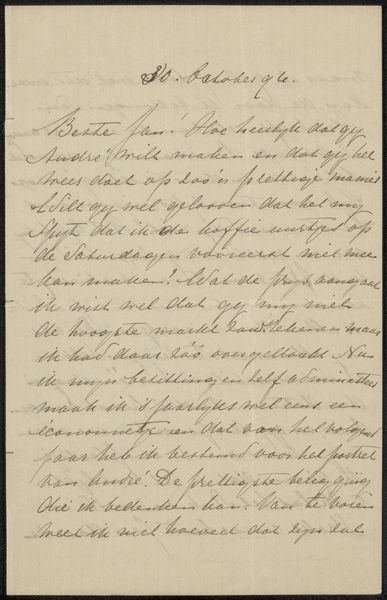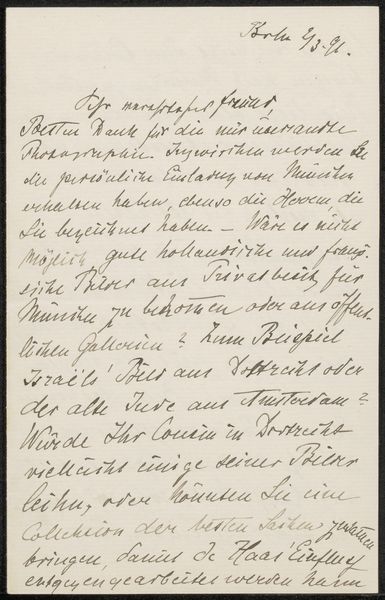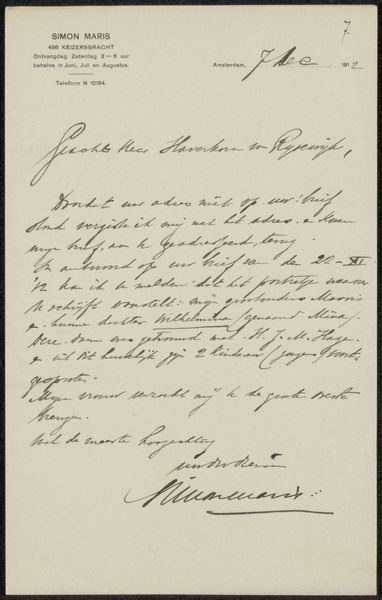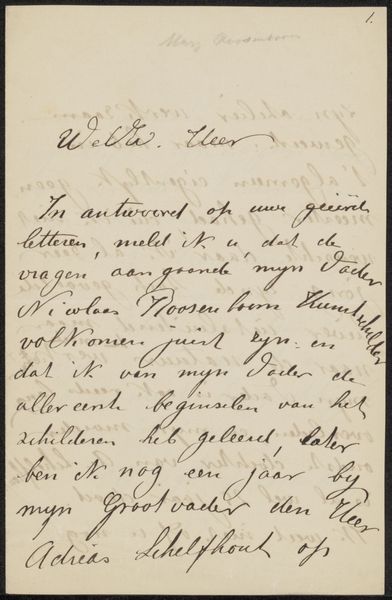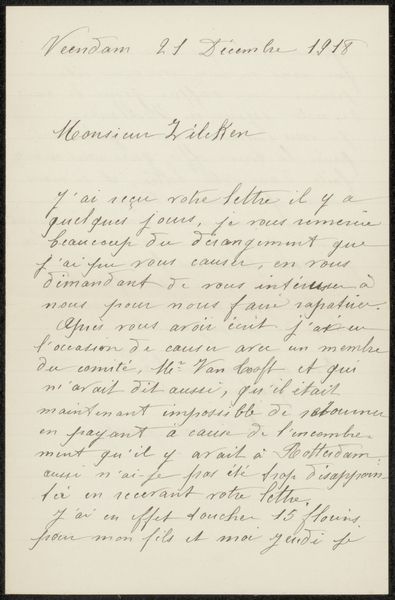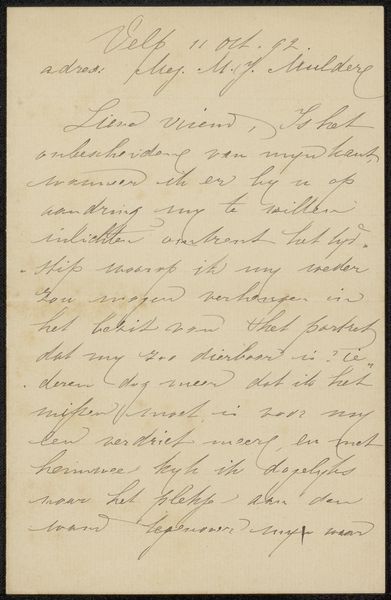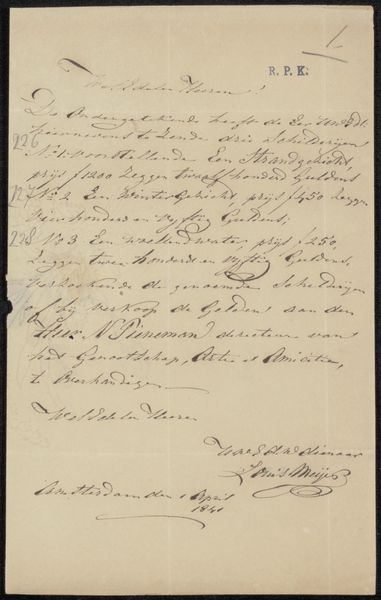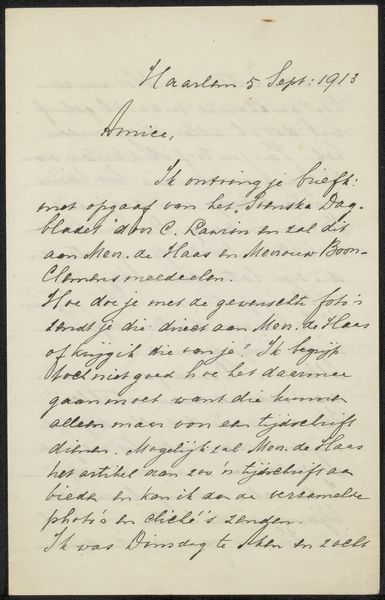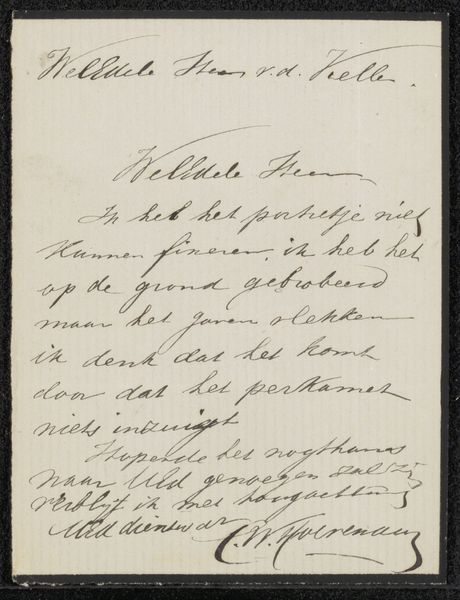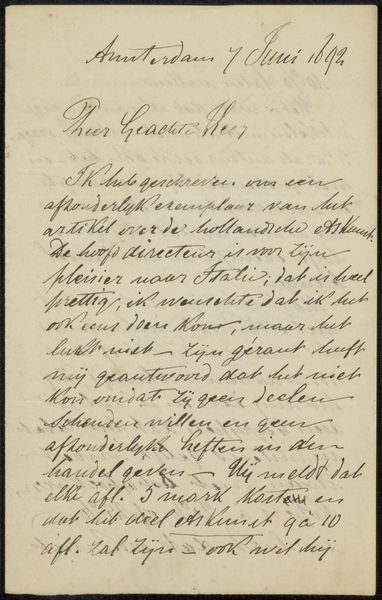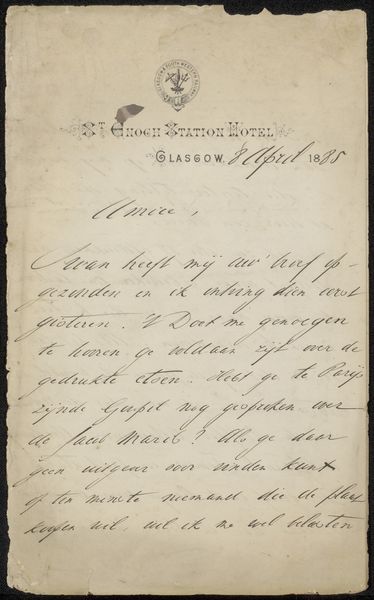
drawing, paper, ink, pen
#
portrait
#
drawing
#
pen drawing
#
ink paper printed
#
paper
#
ink
#
pen
Copyright: Rijks Museum: Open Domain
Editor: Here we have a letter, likely from 1897, titled "Brief aan Philip Zilcken," a pen and ink drawing on paper, possibly by Leo Tolstoy. The handwriting is elegant but the overall effect, perhaps due to the faded ink, is quite solemn. What draws your attention when you look at this piece? Curator: The most immediate thing, isn't it, is the hand. It's not just writing; it's the pressure, the flourishes – a direct trace of Tolstoy's presence. These aren't printed words; they’re born of a moment, infused with intention. What survives across a century from this single page? Editor: I see what you mean. It feels very personal, a glimpse into his thoughts. The visual style evokes old letters that often seem quite intimate even when intended for a wider audience. Do you get any sense of its message? Curator: Consider the ritual of letter-writing itself, now nearly vanished. The choosing of paper, the careful forming of each word, the sealing and sending – a miniature performance of care and connection. Letters build shared cultural spaces and individual relationships. What did Tolstoy, a titan of Russian literature, convey to Philip Zilcken? We are not privy to it directly, so how does that heighten our viewing? Editor: So much about connection is lost. I feel like our dependence on rapid technology has eroded patience and our capability for in-depth thought. It’s fascinating how much emotion a simple letter can convey. I learned more about how art persists in everyday life from our chat. Curator: Exactly! We have explored memory embedded in these traces. It helps us re-evaluate the purpose and nature of art in our era. Thank you!
Comments
No comments
Be the first to comment and join the conversation on the ultimate creative platform.
